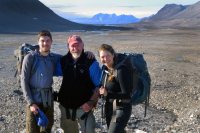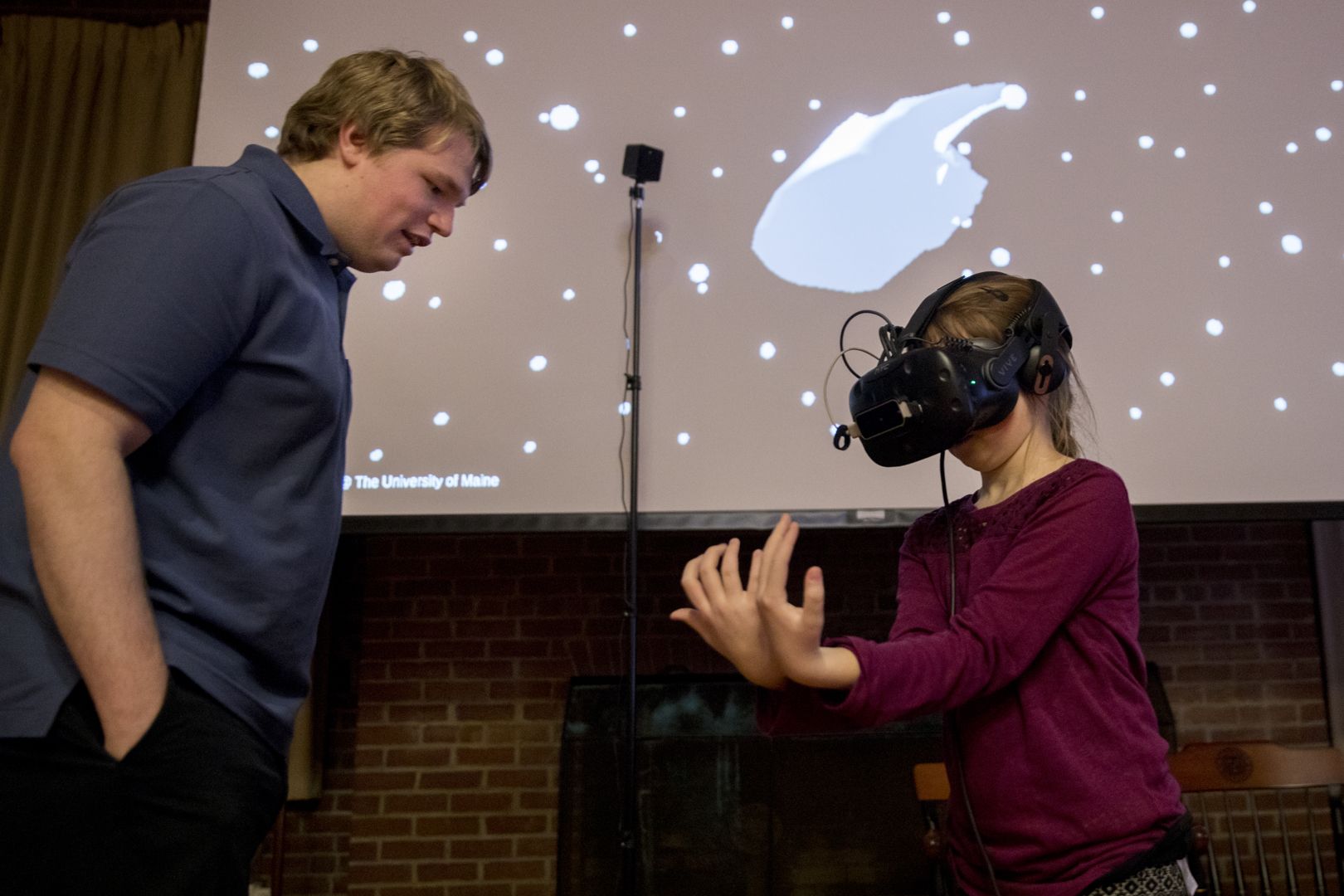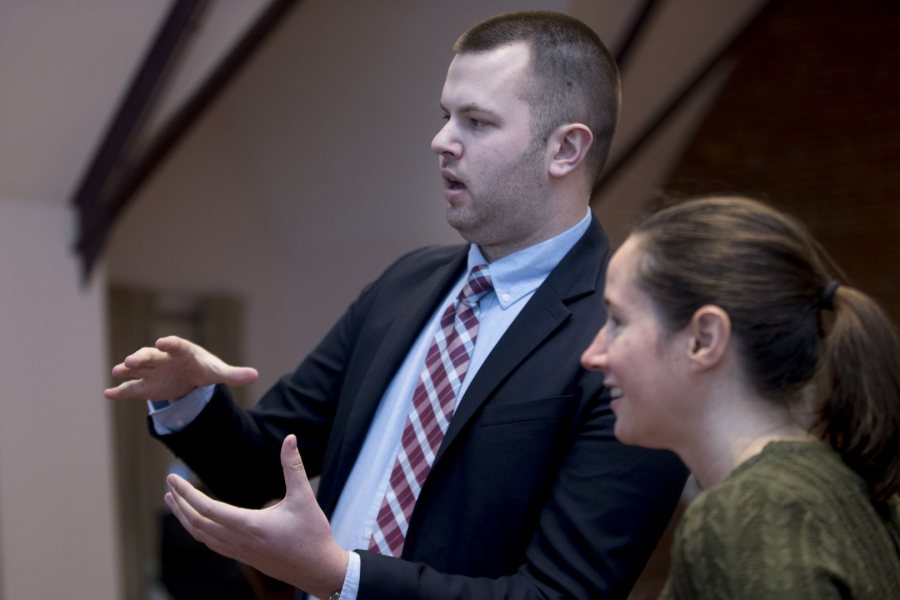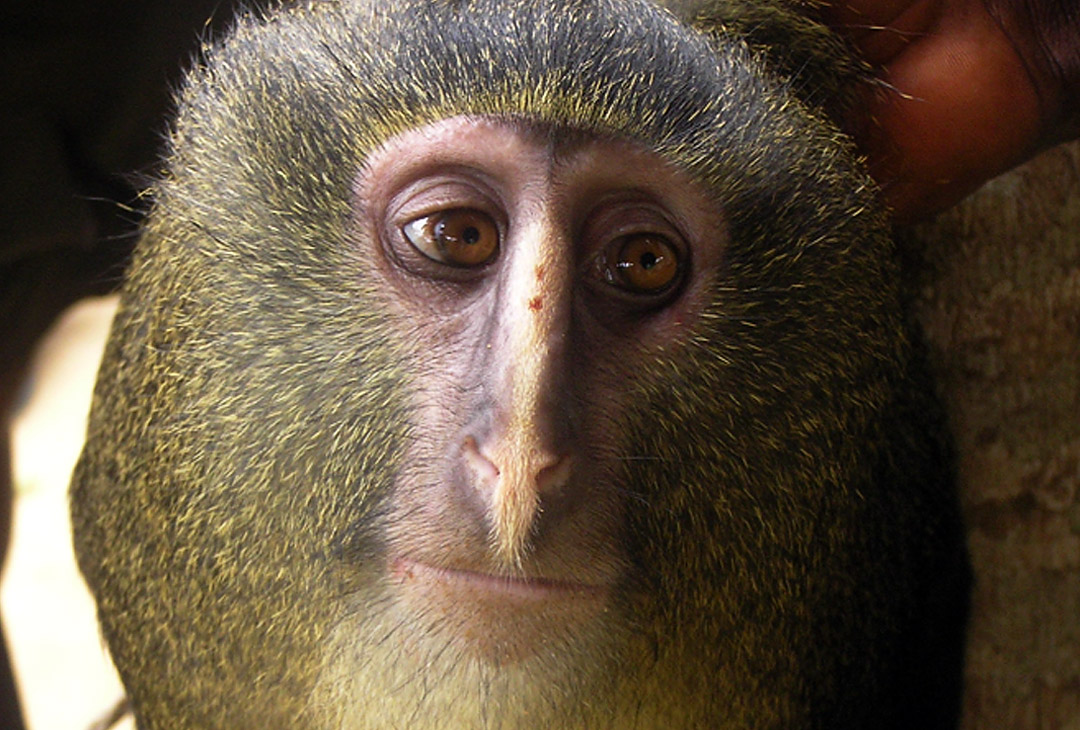
Put on the virtual reality headset that Camden Bock ’16 and Justin Dimmel brought to the Muskie Archives on Jan. 18, and you’re plunged into a black world, white lines creating a sense of three-dimensional space.
You’re told to look for the animated “bear,” a somewhat-bear-like quadruped with multi-colored spheres and other shapes embedded in its back. You’re invited to grab a sphere, which represents a zero-dimensional point. Your own disembodied hands appear in front of you to lift the point off the bear.
When you let go of the point, it hovers in front of you. You’re told to grab the point with each thumb and forefinger and to move your hands apart. When you do, the tiny sphere splits in two, and a line appears between them.

Tim Bruce, a senior at the University of Maine, offers technical advice to Ellie Pfohl, 9. (Phyllis Graber Jensen/Bates College)
That, says Bock, a graduate student at the University of Maine at Orono, is what this VR environment can do: demonstrate the relationship between points, lines, and multi-dimensional geometric figures.
“You can see a line as an infinite series of points stitched together,” he said. “Then you can stretch that line into a parallelogram, which is an infinite number of lines.”
Bock and Dimmel, an assistant professor of mathematics education and instructional technology at UMaine and Bock’s adviser, are part of the Immersive Mathematics in Rendered Environments Lab in the College of Education and Human Development, which created the virtual reality system to help teach geometric concepts. Bock is working on the system for his master’s thesis, en route to a doctorate at the Maine Center for Research in STEM Education.”
Bates students as well as faculty and staff and their children filed into Muskie to try out the system, playing with figures as their work displayed on screens behind them. With instruction from Bock, Dimmel, and the rest of a UMaine team, they could turn the line into a two-dimensional plane and then a three-dimensional cube, and beyond.
From the bear’s back they could also grab a spatial compass that, by revolving a circle in space, allowed them to make a sphere big enough to step inside.
Bock said research still needs to be done to figure out what students might learn from this system. But it clearly has promise as an interactive way to teach geometry.
“We tend to put two-dimensional figures and three-dimensional figures in different categories, but there are a lot of meaningful connections you can make between them,” Bock said. “We created an interface to show it.”





